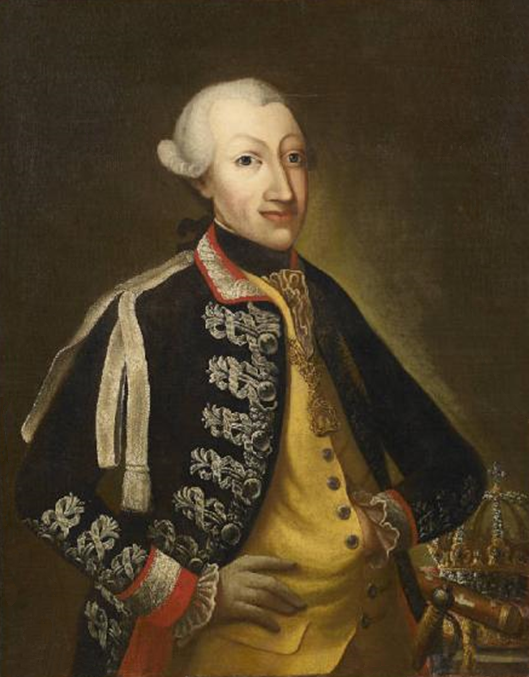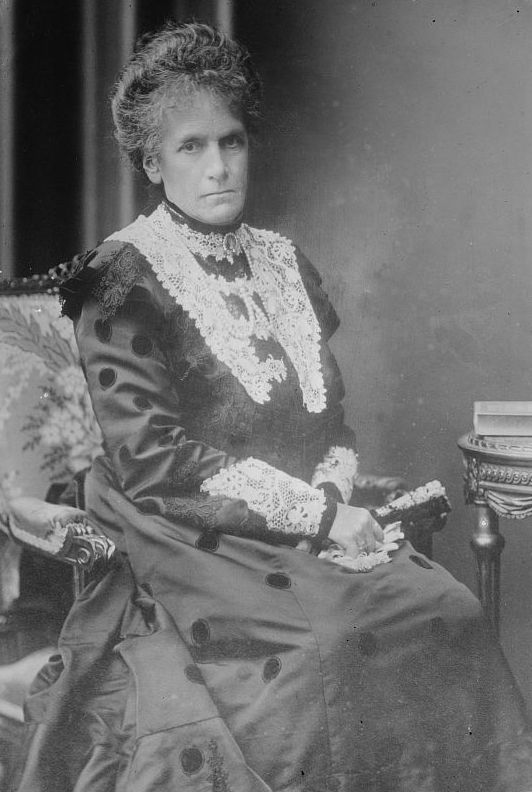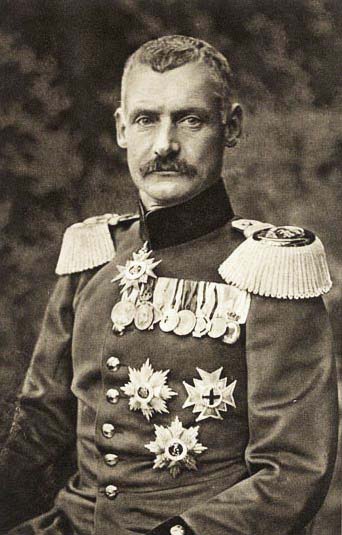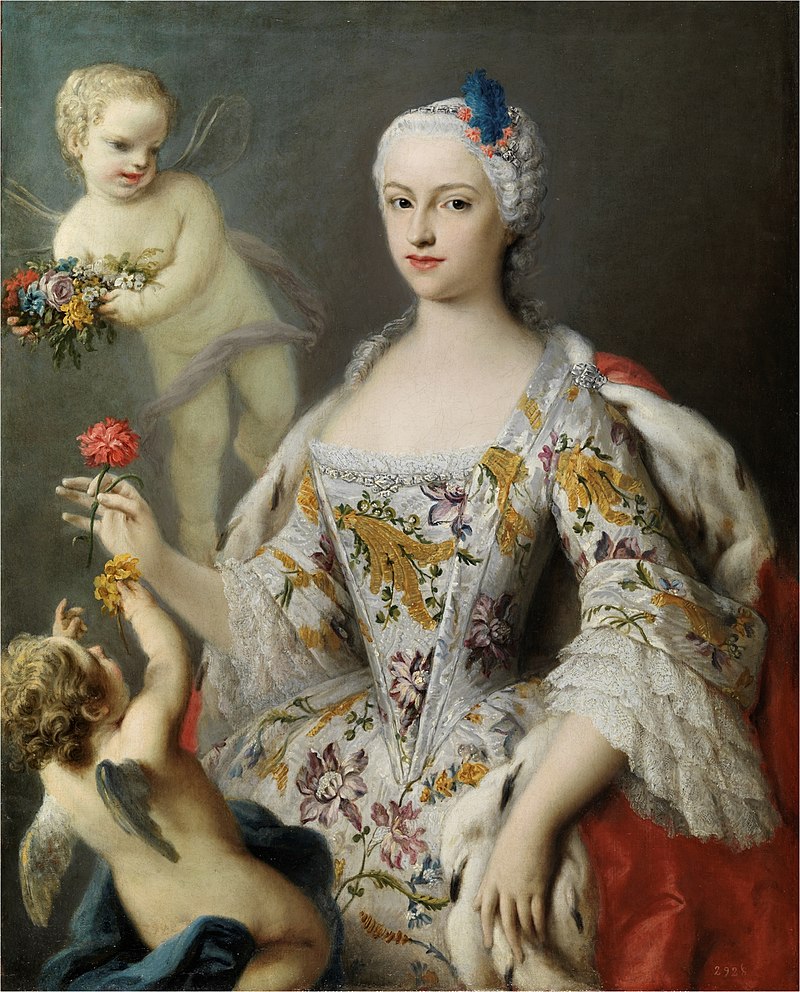by Susan Flantzer
© Unofficial Royalty 2021
The Kingdom of Sardinia: The House of Savoy had been Counts and then Dukes of Savoy, since the 11th century and ruled from the city of Turin, now in northern Italy. Vittorio Amedeo II, Duke of Savoy became King of Sicily in 1713 as a result of his participation in the War of the Spanish Succession. However, in 1720, Vittoria Amedeo II was forced to exchange the Kingdom of Sicily for the less important Kingdom of Sardinia after objections from the Quadruple Alliance (Great Britain, France, Habsburg Austria, and the Dutch Republic).
Sardinia, now in Italy, is the second-largest island in the Mediterranean Sea after Sicily, also now in Italy, but the Kings of Sardinia of the House of Savoy ruled from Turin, the capital of the Duchy of Savoy. They styled themselves as Kings of Sardinia because the title was superior to their original lesser title as Dukes of Savoy. However, they retained the regnal numerical order of the Dukes of Savoy.
Vittorio Emanuele II became the last King of Sardinia upon the abdication of his father in 1849. He then became a driving force behind the Italian unification movement along with Giuseppe Garibaldi, a general and nationalist, and Giuseppe Mazzini, a politician and journalist. Garibaldi conquered Naples and Sicily, the territories of the Kingdom of Two Sicilies, while the Sardinian troops occupied the central territories of the Italian peninsula, except Rome and part of Papal States. With all the newly acquired land, Vittorio Emanuele II was proclaimed the first King of the new, united Kingdom of Italy in 1861.
Note: Children of Kings of Sardinia were often styled “of Savoy” as their fathers were also Dukes of Savoy from the House of Savoy.
********************

Carlo Felice, King of Sardinia; Credit – Wikipedia
Carlo Felice, King of Sardinia and Duke of Savoy was the son of Vittorio Amadeo III, King of Sardinia and Maria Antonia Ferdinanda of Spain to become King of Sardinia. Born on April 6, 1765, at the Royal Palace in Turin, Duchy of Savoy, now in Italy, he was the fifth but the third surviving of the six sons and the eleventh of the twelve children. His paternal grandparents were Carlo Emanuele III, King of Sardinia and his second wife, Polyxena of Hesse-Rheinfels-Rotenburg. Felipe V, King of Spain, who was born Philippe of France, Duke of Anjou, the grandson of King Louis XIV of France, and his second wife Elisabeth Farnese of Parma were his maternal grandparents.
Carlo Felice had eleven siblings, including two brothers who were also Kings of Sardinia. Two of his sisters were married to younger brothers of King Louis XVI of France and later were also Kings of France.
- Carlo Emanuele IV, King of Sardinia (1751 – 1819), married Princess Marie Clotilde of France, no children
- Maria Elisabetta Carlotta of Savoy (1752 – 1755), died in childhood
- Maria Giuseppina of Savoy (1753 – 1810) married Louis Stanislas, Count of Provence, the future King Louis XVIII of France, no children, died before her husband became King of France
- Amedeo Alessandro of Savoy (1754 – 1755), died in infancy
- Maria Teresa of Savoy (1756 – 1805), married Charles, Count of Artois, the future King Charles X of France, had four children, died before her husband became King of France
- Maria Anna of Savoy (1757 – 1824), married her uncle Prince Benedetto of Savoy, Duke of Chablais, no children
- Vittorio Emanuele I, King of Sardinia (1759 – 1824), married Archduchess Maria Theresa of Austria-Este, had six daughters and one son who died at age three from smallpox
- Maria Cristina Ferdinanda of Savoy (1760 – 1768), died in childhood
- Maurizio of Savoy, Duke of Montferrat (1762 – 1799) died unmarried from malaria
- Maria Carolina of Savoy (1764 – 1782), married Anton, Electoral Prince of Saxony, no issue, Maria Carolina died from smallpox, her husband became King of Saxony after her death
- Giuseppe of Savoy, Count of Asti (1766 – 1802), died unmarried from malaria

Carlo Felice as a child; Credit – Wikipedia
As the third son, Carlo Felice was not expected to succeed to the throne. The three youngest children in the family, Carlo Felice, his elder sister Maria Carolina, and his younger brother Giuseppe, were raised together at the Castle of Moncalieri in Moncalieri, Piedmont, Duchy of Savoy, now in Italy.
In the years between the French Revolution and the Napoleonic campaign in Italy, Carlo Felice, his brother Vittorio Emanuele and his wife Maria Theresa of Austria-Este, and his brothers Maurizio and Giuseppe formed a parallel court in opposition to the court of the eldest brother Carlo Emanuele who succeeded to the throne of Sardinia in 1796. During this period, Carlo Felice began to keep a personal diary, an important primary source of the events and conflicts within the Savoy court.
When Napoleon‘s troops invaded the Duchy of Savoy in 1798, the royal family fled first to Tuscany, and then to the island of Sardinia. In 1802, Carlo Felice’s brother Vittorio Emanuele became King of Sardinia upon the abdication of his brother Carlo Emanuele, who was despondent after the death of his wife. Carlo Felice served as Viceroy of Sardinia from 1799 – 1806 and 1817 – 1821. During his time as Viceroy, Carlo Felice successfully took action against crime and poverty. An office for the administration of crown mines and forests was established. The farming of olives was encouraged, and commercial contracts were granted to encourage local production.

Carlo Felice’s wife Maria Cristina of Naples and Sicily; Credit – Wikipedia
There was a succession crisis in the Kingdom of Sardinia. The abdicated Carlo Emanuele was childless. The current king, Vittorio Emanuele I, had five surviving daughters who could not succeed to the throne, and his only son had died at the age of three from smallpox. The three other brothers of Carlo Felice, Vittorio Emanuele, and Carlo Emanuele had all died unmarried. It was up to Carlo Felice to provide an heir. On March 7, 1807, in the Palatine Chapel at the Royal Palace in Palermo, Sicily, Carlo Felice married Maria Cristina of Naples and Sicily, daughter of Ferdinando IV, King of Naples and Sicily (later Ferdinando I, King of the Two Sicilies) and Maria Carolina of Austria. However, their marriage was childless.

Carlo Felice in his coronation robes; Credit – Wikipedia
In March 1821, liberal revolutions were occurring throughout Italy. However, Vittorio Emanuele I was not willing to grant a liberal constitution, so he abdicated the throne of Sardinia in favor of his brother Carlo Felice on March 13, 1821.
Because Carlo Felice was in the Duchy of Modena at the time, Vittorio Emanuele temporarily appointed Carlo Alberto, 7th Prince of Carignano, the senior male member of the House of Savoy-Carignano, a cadet branch of the House of Savoy, as regent. Carlo Alberto made concessions to the rebels and put a liberal constitution into effect. However, when Carlo Felice returned, he abolished the new constitution and ruled as an absolute monarch.

Hautcombe Abbey; Credit – By Martin Leveneur – Own work, CC BY-SA 3.0, https://commons.wikimedia.org/w/index.php?curid=21171623
In 1824, Carlo Felice purchased the Hautecombe Abbey, a former Cistercian monastery, then in the Duchy of Savoy, now in Saint-Pierre-de-Curtille, France, where many of his ancestors were buried, and began a restoration project. Hautecombe Abbey was sold in 1792 after the French invaded the Duchy of Savoy and converted it into a china factory. The abbey was re-constructed by Ernesto Melano, (link in French), an architect from the Duchy of Savoy, in a Gothic-Romantic style and then given back to the Cistercian Order.

Death of Carlo Felice; Credit – Wikipedia
Carlo Felice died, aged 66, on April 27, 1831, at the Palazzo Chablais in Turin, Duchy of Savoy, now in Italy, which had been given to him by his sister Maria Anna, Duchess of Chablais. He was buried at Hautecombe Abbey, where his wife was buried when she died in 1849. Upon the death of Carlo Felice, the main line of the House of Savoy became extinct. He was succeeded by the senior male member of the House of Savoy-Carignano, who reigned as Carlo Alberto I, King of Sardinia.
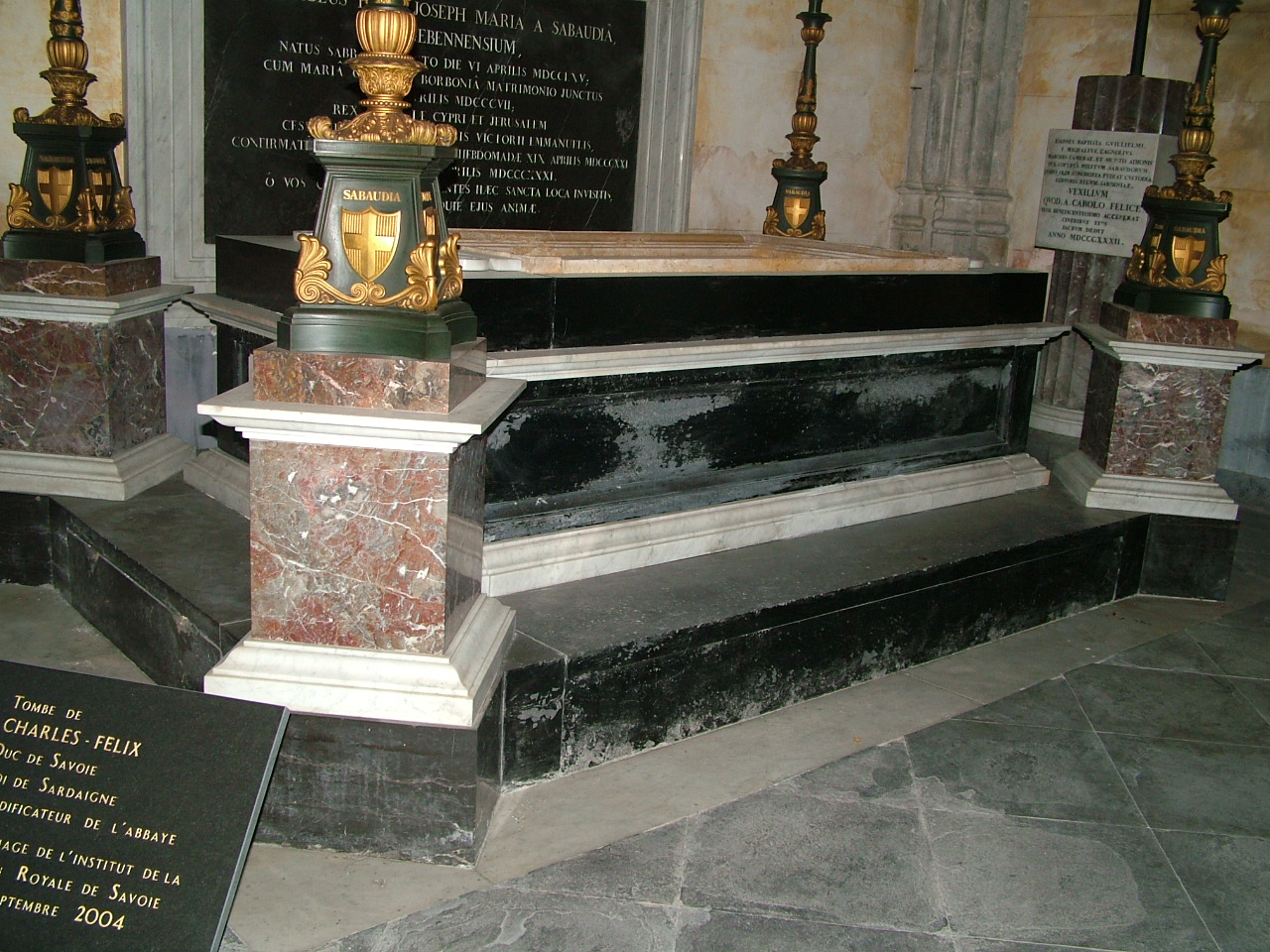
Tomb of Carlo Felice, King of Sardina at Hautcombe Abbey; Credit – Von krischnig – selbst fotografiert, Bild-frei, https://de.wikipedia.org/w/index.php?curid=3354520
This article is the intellectual property of Unofficial Royalty and is NOT TO BE COPIED, EDITED, OR POSTED IN ANY FORM ON ANOTHER WEBSITE under any circumstances. It is permissible to use a link that directs to Unofficial Royalty.
Works Cited
- De.wikipedia.org. 2021. Karl Felix (Sardinien-Piemont) – Wikipedia. [online] Available at: <https://de.wikipedia.org/wiki/Karl_Felix_(Sardinien-Piemont)> [Accessed 30 June 2021].
- En.wikipedia.org. 2021. Charles Felix of Sardinia – Wikipedia. [online] Available at: <https://en.wikipedia.org/wiki/Charles_Felix_of_Sardinia> [Accessed 30 June 2021].
- En.wikipedia.org. 2021. Hautecombe Abbey – Wikipedia. [online] Available at: <https://en.wikipedia.org/wiki/Hautecombe_Abbey> [Accessed 30 June 2021].
- Flantzer, Susan, 2021. Vittorio Amadeo III, King of Sardinia, Duke of Savoy. [online] Unofficial Royalty. Available at: <https://www.unofficialroyalty.com/vittorio-amadeo-iii-king-of-sardinia-duke-of-savoy/> [Accessed 28 June 2021].
- Flantzer, Susan, 2021. Vittorio Emanuele I, King of Sardinia and Duke of Savoy. [online] Unofficial Royalty. Available at: <https://www.unofficialroyalty.com/vittorio-emanuele-i-king-of-sardinia-and-duke-of-savoy/> [Accessed 30 June 2021].
- It.wikipedia.org. 2021. Carlo Felice di Savoia – Wikipedia. [online] Available at: <https://it.wikipedia.org/wiki/Carlo_Felice_di_Savoia> [Accessed 30 June 2021].



